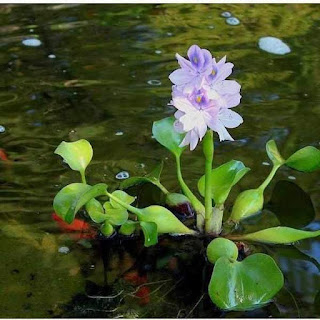What Floating Pond Plants?
Because they decrease algae development and protect fish and other aquatic organisms from predators, pond plants that float on the surface of the water are essential to your water garden. Most of the other largest growing water plants are floating plants, which enables them to fight with algae for resources and limit algal development by competing for nutrients.
Frogbit (Hydrocharis Morsus-range), duckweed (Lemna Valdivia), pointed weed (Lemna trisulca), and Azolla floating fern (or tiny duckweed fern) are among the hardy floating plants you may use (Azolla Caroliniana). Mustard plant or water lettuce (Pistia stratiotes) and floating fern are examples of non-hardy species (Salvinia natans). Every well is used from May through September. They are floating subtropical plants that may hibernate in an aquarium. Subtropical floating plants, like water chestnut and water hyacinth, might function as attractive plants, but they also have little ecological use in this climate.
The Best Koi Floating Pond Plants For Your Home Pond
Carolina Mosquito Fern
An unusual cyanobacterium lives in harmony with Azolla caroliniana in a symbiotic relationship (Anabaena azollae). As a result, these bacteria have the capacity to fix nitrogen. Carolina mosquito fern is utilized in Asia as a fertilizer for rice fields because of its capacity to accumulate huge amounts of nitrogen. The fern is discharged into the water whenever the rice fields are inundated. They prevent weed development, and once the fields have been re-drained, the nitrogen that has been accumulated is beneficial to the rice plants.
Floating Crystalwort
Floating crystal work is found all over the world. In addition to serving as a fish breeding area and oxygenating plant, it is widely popular amongst aquarists. During fall, it sinks to the bottom of a pond, where it spends the winter. It also can endure prolonged droughts. The organism will begin to grow and reproduce as soon as it is re-wet. Several lemnia species (duckweed) and floating crystal work are commonly found simultaneously; however, when it comes to fighting for nutrients and light, the duckweed typically prevails.
Ivy-Leaked Duckweed
The ivy-leaved duckweed, on the other hand, does not float on the surface of the water but rather lies close to it. In Europe, North and South America, as well as portions of Asia, it is endemic to colder climates. Because of this, it does not propagate to warmer climates. Overwintering is accomplished by burying it in the earth, and it emerges in the spring. Aquatic animals, such as koi and goldfish, feed on it because of its strong taste.
Water Soldiers
This plant typically floats in the summer, which makes it unique. Autumn brings a fall to the surface of the ocean, where it spends the winter. After a while, it reaches the surface again in the springtime. Beautiful white blooms bloom in the summer. Europe and portions of Asia are its natural habitats. There seem to be male and female plants. However, runners can also be used to propagate the species. Inside the UK, for example, virtually all plants are female. They have fragile leaves that enable them to proliferate.






